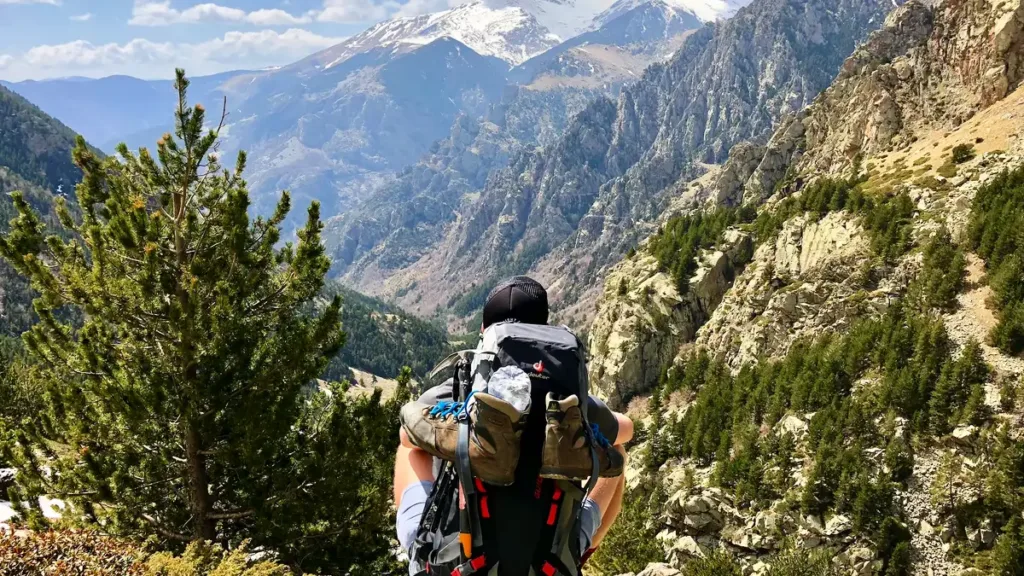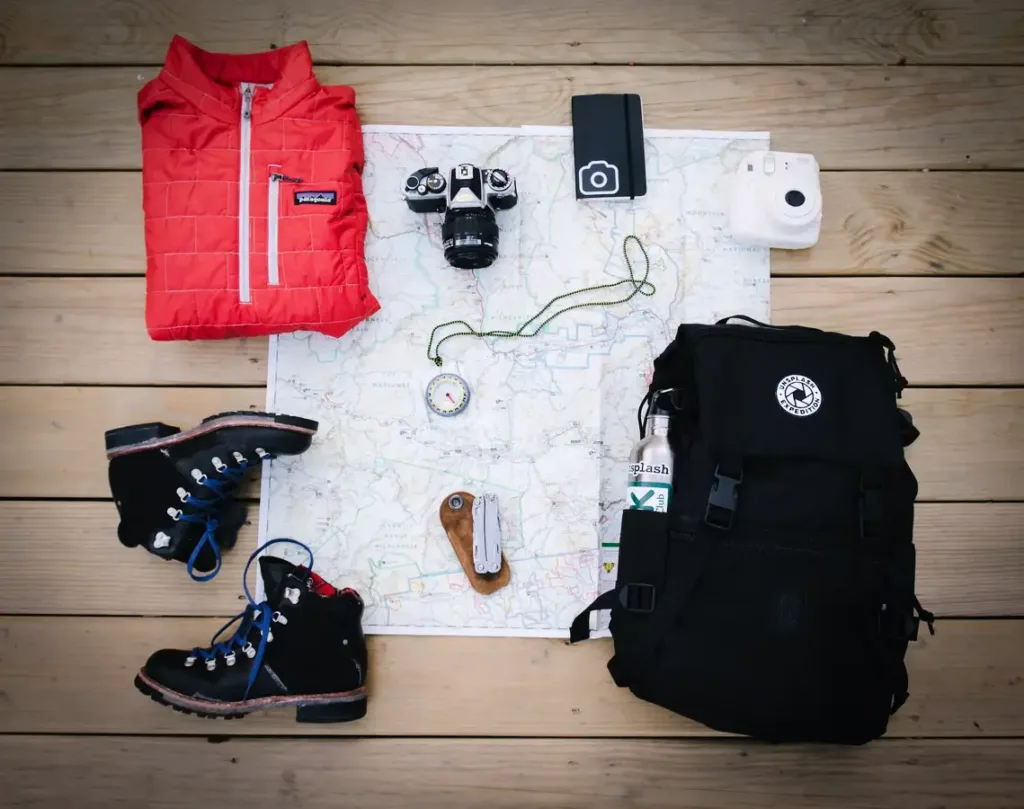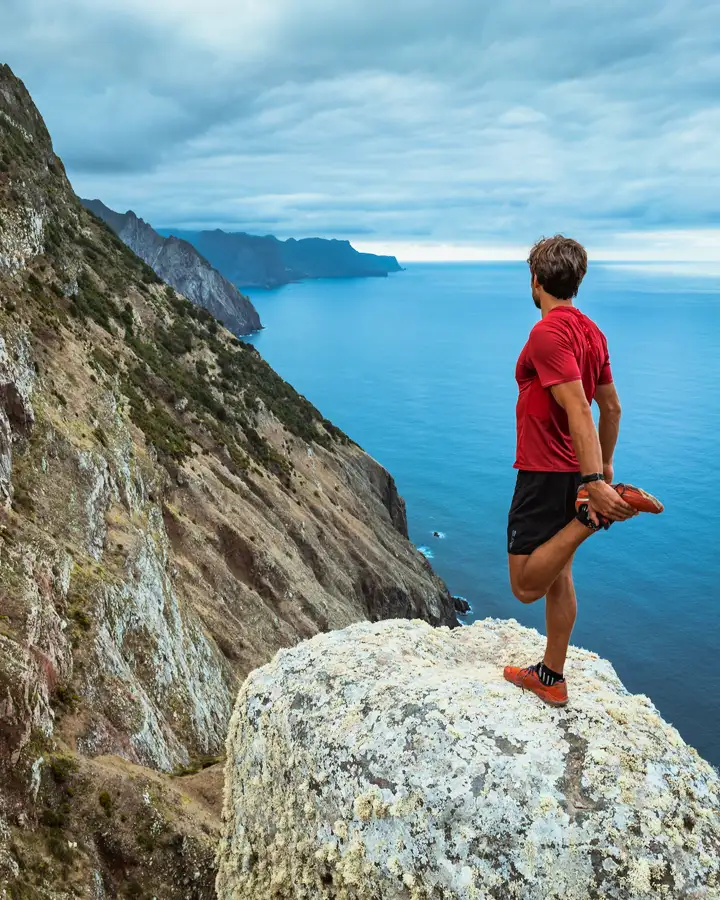Preparing for a hike: 9 Critical steps you shouldn’t ignore
This post may contain affiliate links. This means that we may receive a small commission from purchases through those links. Read more in our affiliate disclosure.
A long hike is a journey that tests your physical endurance and mental resilience. It’s an opportunity to disconnect from the digital world and reconnect with nature. However, the success of your hiking adventure is largely determined by one crucial factor – preparation. This guide will provide you with a detailed checklist of the essential steps of preparing for your hike that you need to take the evening before and the morningo f your hike to ensure you’re fully prepared for the journey ahead.

What to do The Evening Before A long Hike
Final Gear Check
The importance of a thorough gear check cannot be overstated. The wilderness is unforgiving, and the smallest oversight can turn a thrilling adventure into a challenging ordeal. Start by laying out all your gear in a clean, open space. This allows you to see everything you plan to take with you and makes it easier to spot any missing items.
Your gear should include the essentials: hiking boots or sandals, your backpack, eating supplies, plenty of food, water bottles, and water-treatment supplies; and if you stay overnight, your tent or hammock, sleeping bag and pad, and if that’s your thing, stove and fuel,. Each of these items plays a vital role in your survival and comfort during the hike. For a more comprehensive list of gear to consider, take a look at REI’s backpacking checklist.
Also, consider the smaller items that are easy to overlook but can make a significant difference on your hike. These include a map and compass for navigation, a first-aid kit for emergencies, a headlamp for visibility, and personal hygiene items. And the cables and chargers for your phone and other electronics! There are few things more annoying than finally finding an electric outlet and noticing you’ve forgotten your cables.
It’s always better to have it and not need it than to need it and not have it.
Finally, if you need to get up early the morning of the hike, lay out your clothes, so that you can just slip into them no matter how sleepy you are.

Weather and Trail Condition Review
Mother Nature is unpredictable, and the weather can change in an instant. Checking the weather forecast and trail conditions the evening before your hike can help you prepare for what’s to come. Use reliable weather apps or websites to get the most accurate forecast. Look for information on temperature highs and lows, the chance of precipitation, wind speed and direction, and sunrise and sunset times. This information will help you plan your clothing, gear, and hiking schedule.
In addition to the weather, you should also check the condition of the trail. Look for any reports of trail closures, hazardous conditions, or wildlife activity. Websites and forums dedicated to hiking and outdoor activities often have up-to-date trail reports posted by other hikers. This information can help you adjust your route or prepare for specific trail conditions. Also, it might be helpful to to familiarize yourself with the hiking safety guidelines.
Meal preparation
Preparing your meals ahead of time can save you a lot of hassle on the trail. When choosing your meals, consider factors like nutritional value, weight, cooking time, and taste. You want meals that are high in protein and carbohydrates to replenish your energy, light enough to carry comfortably, quick to cook, and enjoyable to eat. For some great suggestions, check out Healthline’s article on healthy backpacking foods.
Dehydrated meals are a popular choice among hikers because they’re light, easy to pack, and require just hot water to prepare. However, you can also consider other options like sandwiches, wraps, or even pre-cooked meals. Don’t forget to pack high-energy snacks like nuts, dried fruit, and energy bars for quick fuel on the go.
Also, make sure you have everything you will need for breakfast tomorrow, so you can start your day without a hitch.
Hydration
Starting your hike well-hydrated can make a world of difference. Dehydration can lead to fatigue, dizziness, and more serious health issues, which can put a quick end to your hiking adventure. Make it a point to drink plenty of water the evening before your hike. Also, consider packing a hydration reservoir or water bottles and a water treatment method for the trail. Staying hydrated is crucial for maintaining your energy levels and overall health during your hike.

Early Night’s Rest
A good night’s sleep is essential for a successful hike. Your body needs time to rest and recover from the day’s activities, and to store energy for the hike ahead. Try to go to bed early to ensure you get enough rest. Make your sleeping environment as comfortable as possible – a quiet, dark, and cool room is ideal for a good night’s sleep. Avoid caffeine and alcohol, as they can interfere with your sleep quality.
Instead, consider a calming bedtime routine, such as reading a book or listening to soft music, to help you relax and fall asleep more easily. Anything to keep your mind off the upcoming hike is good – you’ve done everything to prepare you could, nothing to worry about now.

What do do The Morning of Your Hike
Healthy Breakfast
The day of your hike has finally arrived. Start it off right with a nutritious breakfast. Your body will need a substantial amount of energy for the journey ahead, and a well-balanced meal in the morning can provide that.
Opt for foods that are high in complex carbohydrates and protein. These nutrients are essential for sustained energy and muscle function. Oatmeal with nuts and fruits is a great option. The oats provide long-lasting energy, the nuts add protein and healthy fats, and the fruits contribute natural sugars for a quick energy boost and vitamins for overall health.
Whole grain toast with peanut butter is another excellent choice. The whole grains are packed with fiber that aids digestion and provides energy, while the peanut butter adds a dose of protein and healthy fats.
If you prefer a savory breakfast, consider a breakfast burrito with eggs, beans, and vegetables. The eggs and beans are high in protein, and the vegetables add fiber and essential vitamins and minerals.
Avoid foods high in simple sugars as they can cause a spike and crash in energy levels. Also, remember to drink plenty of water to start your day hydrated.

Take a shower
Taking a shower before your hike leaves you smelling nice for longer, can avoid skin irritations, and keeps mosquitos at bay.
Dressing for the Hike
Dressing appropriately for your hike can significantly impact your comfort and safety on the trail. The key is to dress in layers. This allows you to easily adjust your clothing to match the changing weather and your activity level.
Start with a base layer made of moisture-wicking material. This layer helps keep sweat away from your skin, keeping you dry and comfortable. Next, add an insulating layer, like a fleece jacket or a wool sweater, to keep you warm. Finally, wear a waterproof and windproof outer layer to protect you from the elements.
Don’t forget your hat, sunglasses, and sunscreen for sun protection. Even on cloudy days, UV rays can be strong and cause sunburn. A hat can also provide shade and help keep you cool.
Choose your hiking boots or shoes based on the terrain. For gentle hikes on smooth trails, hiking shoes or trail runners are sufficient. For treks on rocky, rugged trails, boots will provide more support.
Pre-Hike Stretching
Before you hit the trail, take a few minutes to stretch your muscles. This can help prepare your body for the physical activity ahead and reduce the risk of injury.
Start with some gentle dynamic stretches to warm up your muscles. These could include leg swings, arm circles, and torso twists. Then, move on to static stretches, focusing on your legs, back, and shoulders. Hold each stretch for about 30 seconds and remember to breathe.
Stretching not only improves flexibility and reduces the risk of injury, but it also increases blood circulation and helps you feel more awake and ready to start your hike.
Don’t overdo it though – intense static stretches have been shown to decrease performance, and are best reserved for after the exercise.

Mental Preparation
Finally, take a moment for mental preparation. A long hike can be as much a mental challenge as a physical one.
Visualize the trail ahead and imagine yourself successfully navigating it. Anticipate the challenges you might face, such as steep inclines, rough terrain, or changing weather, and mentally prepare yourself to overcome them.
Remind yourself of why you’re doing this hike. Whether it’s for the stunning views, the physical challenge, or the sense of peace and solitude, keeping your goal in mind can help motivate you throughout the hike.
Take a few deep breaths, embrace the adventure that awaits, and set off with confidence and positivity.





